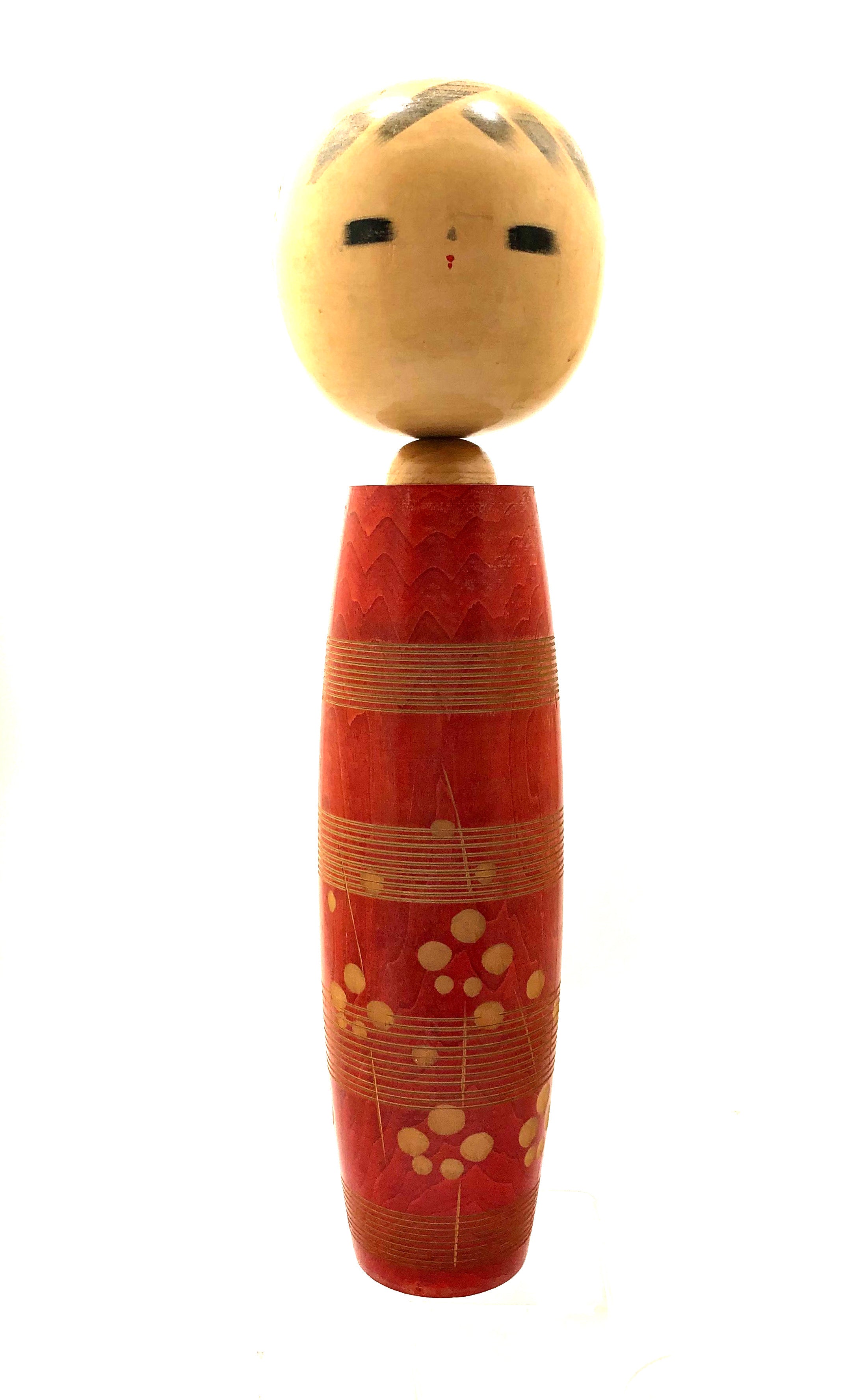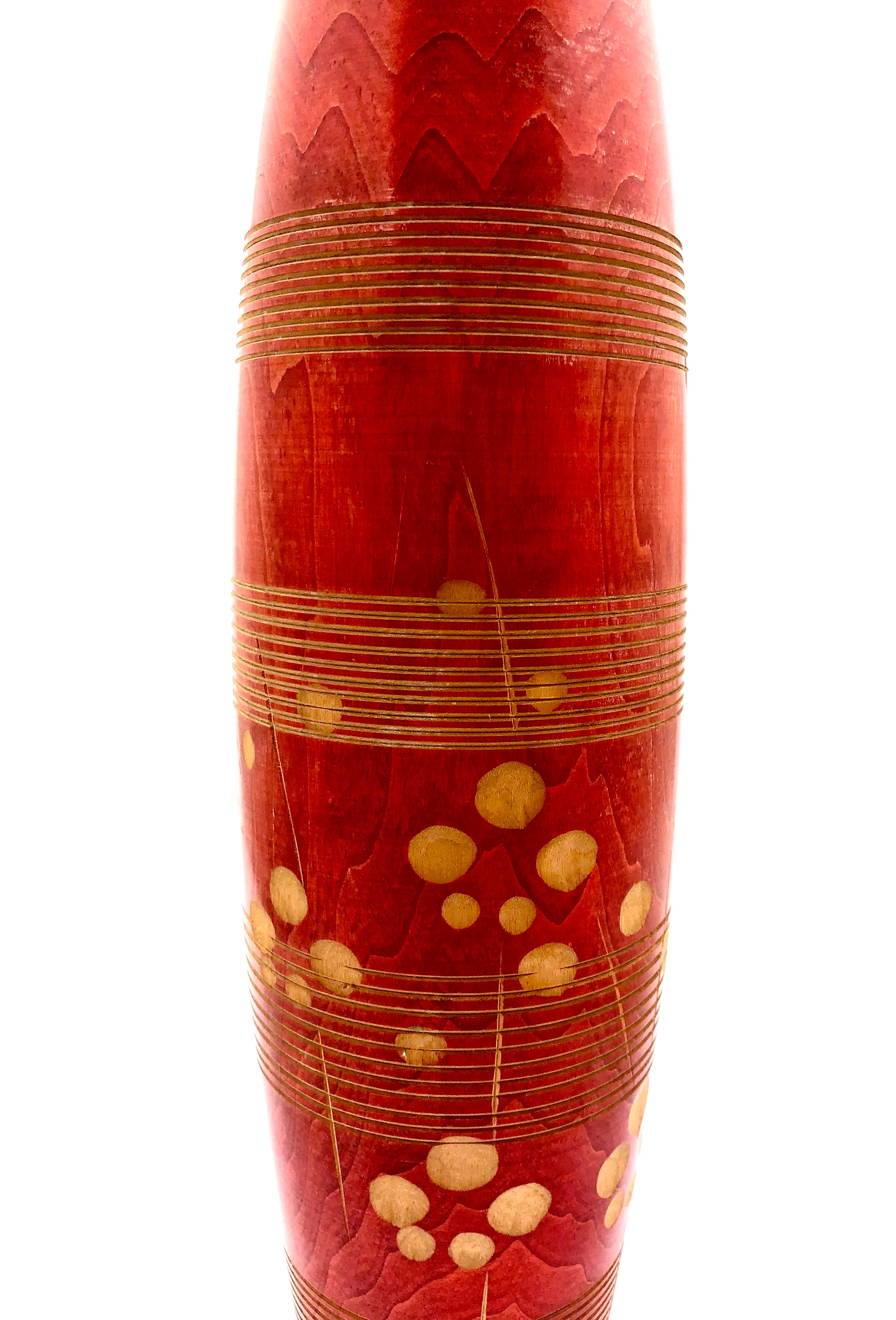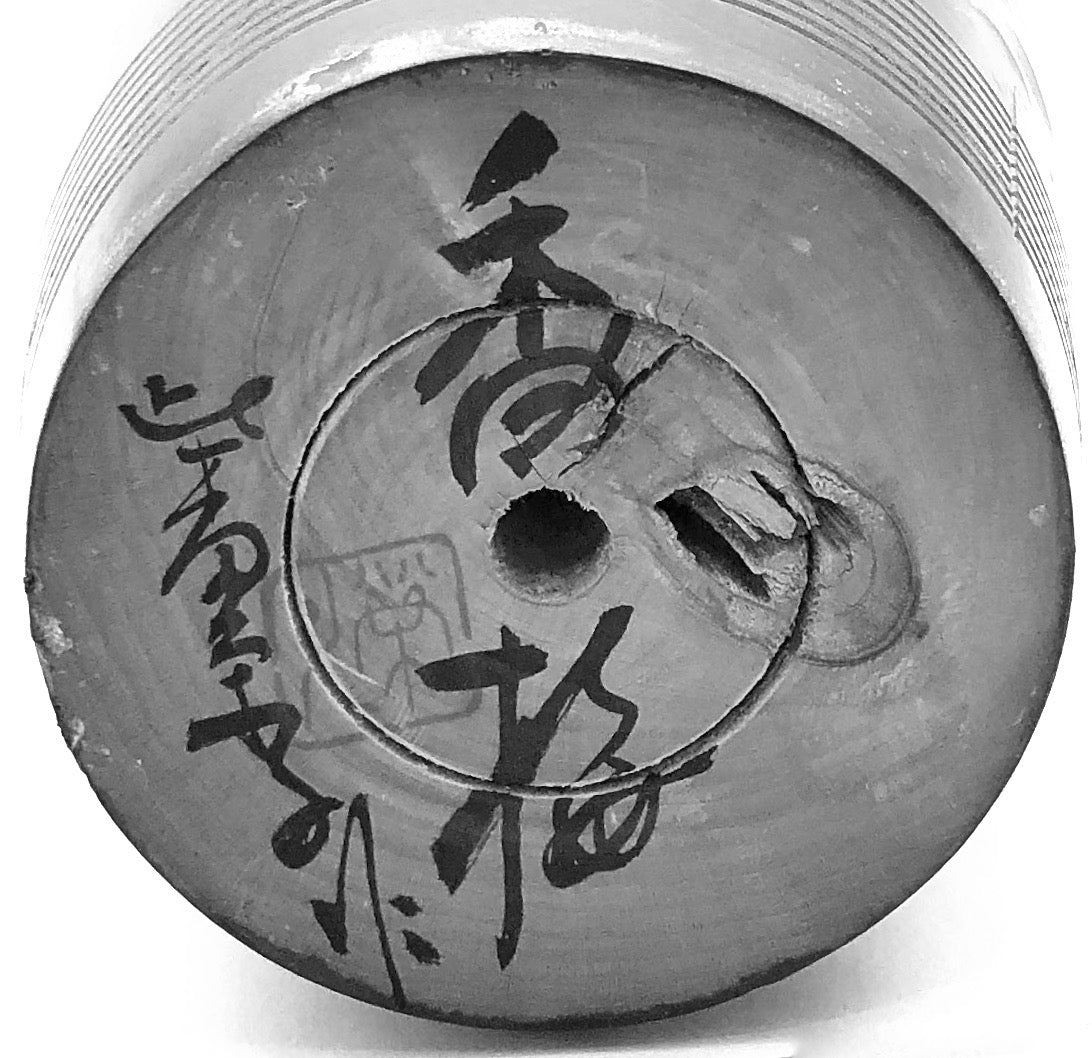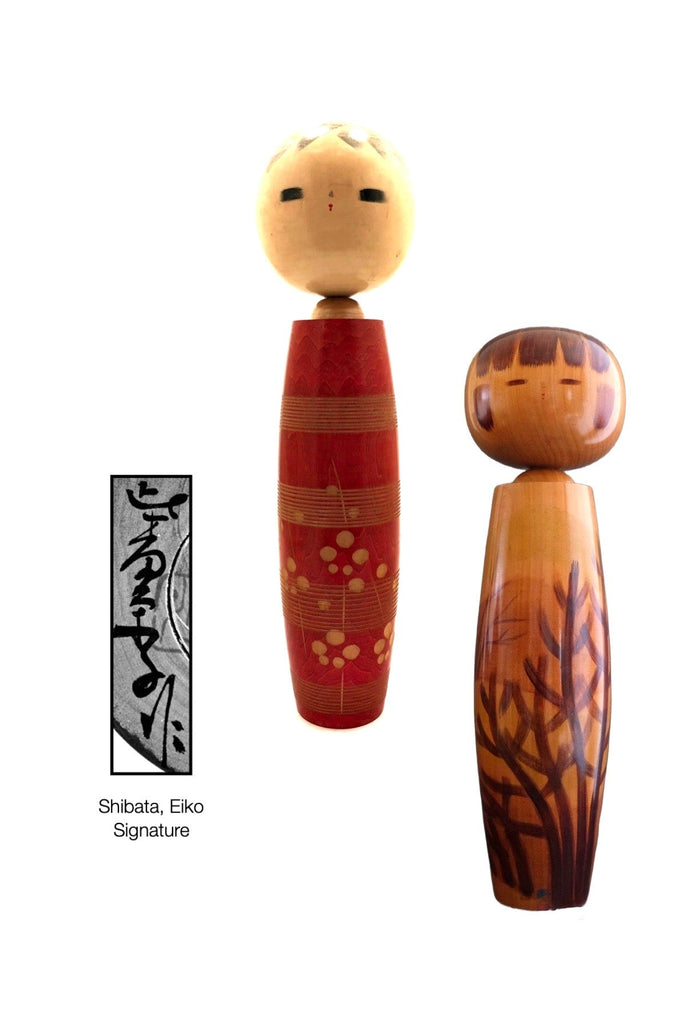


Vintage Sosaku Kokeshi by Shibata, Eiko Entitled: Ume | Plum Blossom
Dimensions: 17-0”h
This is an exceptionally large Kokeshi with abstract carved Plum Blossom ornamentation. It has horizontal carved rings similar to fine Rokoru Mayo lines that are the same in width and encircle the doll, all done through turning on the lathe. The piece has a beautifully vermillion (red) lacquered background in a waterfall pattern accentuating the carved artwork. Her head and neck are two separate elements to give a graceful dimension to the doll with hair that is simply suggested with bold black eyes and tiny red lips. The piece is detailed and signed on the bottom and stamped.
Condition: Excellent and commensurate with age with no scratches, flaws, or discoloration. The photos support the description.
NOTE: Eiko Shibata, (1924-) is from Shiraishi, Miyagi Prefecture. She has been creating kokeshi for over fifty (50) years focusing on culture and the heart of the Japanese people.

Artisan
Woodworker: Shibata, Eiko
1924-
Biographical History:
Shibata-san has been creating Kokeshi for over fifty, (50), years, focusing on the culture and heart of the Japanese people. She was born, and lived in Miyagi-ken, Sendai-shi. As collectors, we felt it was most important to represent all Sosaku Kokeshi artists, whether or not each artist has a written account of his/her life. We show the diversity of cultural values and the creative work produced by a multitude of artists.
In researching old writings through articles and books that remain, it is evident that the Kokeshi Craftsperson not only created beautiful forms as toys, but also kept alive cultural values, customs, and fashion through the extensive representations of Kokeshi dolls. The beauty is in the doll and not the signatures, for most masters never signed their dolls. Later they named the dolls, but only when Westerners insisted on signatures because they did not know the artists, so the carvers began to sign their works, for the carvers wanted to promote sales to make a living, during the seasons that did not provide an environment to continue their otherwise daily work.
Collector's note – descriptive qualities, standard characteristics & ornamentation styles:
Shibata’s dolls are typically large, impressive dolls expressing the joy of the season, (incorporating cherry and plum blossoms), and the awakening of Spring. She works very abstractly, with her decorative elements, giving them both interest and character. Many of her pieces are lacquered in bright colors such as vermillion. As seen here, the minimally carved elements give definition to the Kimono
Explore & Learn More about Woodworker: Shibata, Eiko